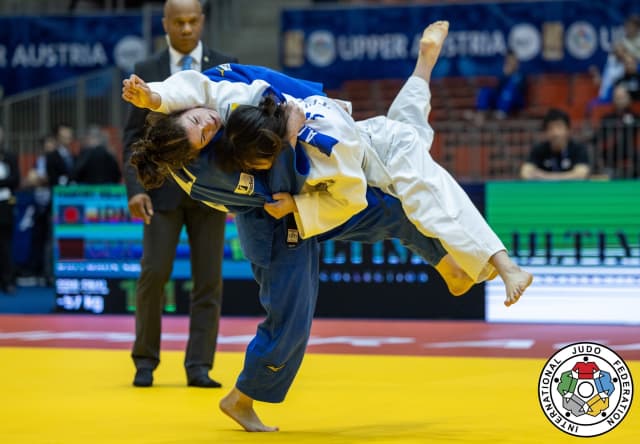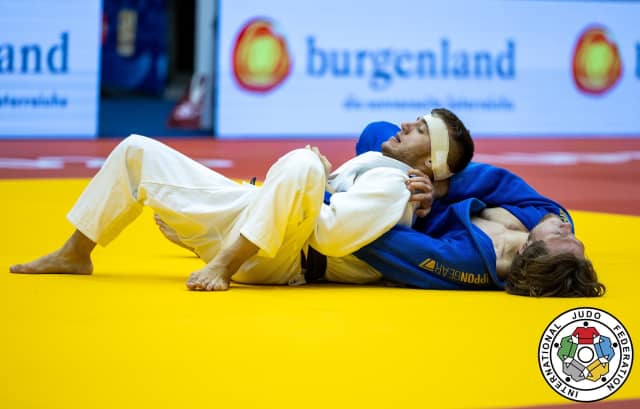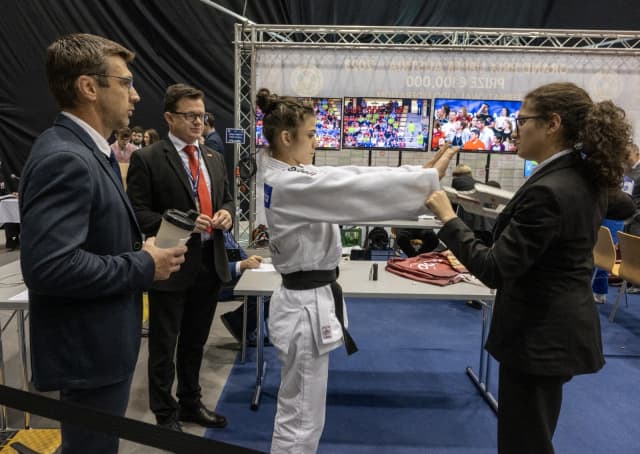“One person really stood out for me; I have been very impressed by Seija Ballhaus (GER) today, attacking well and always with a positive attitude. She went into the semi-final very hard against the young Japanese competitor; it was brave. No matter who she’s faced today, she has approached the job that way. She took on Asian, Panamerican and European judoka exactly the same way, applying her own style and strategy strongly and this is how she earned her place on the podium."
"Speaking of the Japanese athletes at -57kg, it has been interesting to see this young generation from the Japanese women’s team, across all 3 weights on day 1. We can see the same attention to detail in ne-waza as we see with the more experienced athletes but we also notice some gaps in the tachi-waza repertoire and tactical capability, which will undoubtedly be tackled following events such as this.
I like to see the continuation of emphasis which has been developing over the last couple of years, with referees giving time in ne-waza. When we see progress, it is allowed to continue and that leads to a display of high level judo with huge variation in skill sets and that can only be a good thing. Judo is not just about the direct throwing techniques and that is confirmed more and more on the Tour."
"I like that some of the fights where athletes really show their intention to throw, are allowed to run their course, despite some long golden score periods. When judoka deserve the extra time they should have it and that has been seen in Linz, with some good quality positive scores being recorded deep into golden score, with them hunting the right moment to make their work count.
In terms of organisation, there was an interesting anomaly with the two warm-up areas. Delegations could choose the calmer space or the busier one closer to judogi control. This catered for more athletes to find their best atmosphere and prepare in an individual way. Some warm up spaces can be cramped and difficult to use but in Austria we have space, choice and a lack of stress; very refreshing."
"That attitude could also be found in judogi control, with a real calmness among the education team and the volunteers. This is really welcome. This athlete-centred way of working was noticed and is clearly right for encouraging the best performances. Especially considering this is Austria’s first grand prix, they have done a great job to ensure everyone feels at home; it is a very inclusive event."
Day two is approaching fast, with the 4 middleweight categories preparing to compete: women -63kg and -70kg and men -73kg and -81kg. Follow the results and live contests via JudoTV.com.



